-
Extensive corrosion found at chemical tanks of W.Va. site which contaminated region
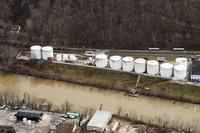
Investigators by the U.S. Chemical Safety Board (CSB) have reported that they detected significant corrosion in MCHM chemical storage tanks at the Freedom Industries site responsible for a 9 January contamination of the Elk River which has impacted over 300,000 residents of the area.
-
-
Tiny laser sensor increases bomb detection sensitivity
New technology under development could soon give bomb-sniffing dogs some serious competition. A team of researchers has found a way dramatically to increase the sensitivity of a light-based plasmon sensor to detect incredibly minute concentrations of explosives. The researchers noted that the sensor could potentially be used to sniff out a hard-to-detect explosive popular among terrorists. The sensor also could be developed into an alarm for unexploded land mines that otherwise are difficult to detect, the researchers said.
-
-
Updating information about U.S. regional earthquake hazards
The USGS recently updated their U.S. National Seismic Hazard Maps, which reflect the best and most current understanding of where future earthquakes will occur, how often they will occur, and how hard the ground will likely shake as a result. While all states have some potential for earthquakes, 42 of the 50 states have a reasonable chance of experiencing damaging ground shaking from an earthquake in fifty years (the typical lifetime of a building). Scientists also conclude that sixteen states have a relatively high likelihood of experiencing damaging ground shaking. These states have historically experienced earthquakes with a magnitude 6 or greater. To help make the best decisions to protect communities from earthquakes, new USGS maps display how intense ground shaking could be across the nation.
-
-
FBI: driverless cars could be used as bombs-on-wheels
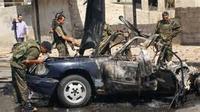
Whether or not a driverless car, from Google or any other company, ever makes it to market, the FBI thinks it may be a “game changing” vehicle which could dramatically change high-speed car chases so that the pursued vehicle would have an advantage over the pursuing car. An agency report also warned that such cars may be used as “lethal weapons.”
-
-
Groundwater reservoirs are being depleted at an increasing rate
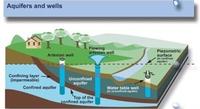
The rate at which the Earth’s groundwater reservoirs are being depleted is constantly increasing. Annual groundwater depletion during the first decade of this century was twice as high as it was between 1960 and 2000. India, the USA, Iran, Saudi Arabia, and China are the countries with the highest rates of groundwater depletion. About 15 percent of global groundwater consumption is not sustainable, meaning that it comes from non-renewable groundwater resources. The increased use of groundwater for irrigation also results in a rise in sea levels, with roughly one tenth of the total sea level rise during the period from 2000 to 2009 due to groundwater depletion.
-
-
A drone finds natural disaster survivors through their cell-phones
During his semester project in Computer Science at the École polytechnique fédérale de Lausanne (EPFL), Jonathan Cheseaux developed a system for locating a person via his or her mobile phone with a drone. This device could be used to find victims in natural disasters.
-
-
Debate in Texas over fossil fuel-based economic growth
Texas officials tout the state’s economic growth, which is due in part to the state’s energy sector. That same energy sector puts Texas’ economy at risk in decades to come, with scientists saying that this economic growth comes at a high cost.State climatologist John Nielsen-Gammon, who was appointed by then-Governor George W. Bush, notes that the state is projected to be several degrees warmer and experience longer and more severe droughts. The see along portions of the state’s 367-mile Gulf Coast has already risen up to one foot in the past century.
-
-
Why hundreds of westerners are taking up arms in global jihad
The conflicts in Syria and Iraq are attracting many Westerners as jihadi fighters. The stereotype that these fighters are migrants who have struggled to find a place in their adopted societies is shattered upon viewing YouTube propaganda videos. The typical portrayal of a violent jihadi is as a brutal group member, wearing sinister ninja-style costumes, maintaining a lifestyle straight from the Dark Ages and determined to drag the world back there. This stereotype is far from reality. Salafism is a thoroughly modern phenomenon, one that materialized the abstract concepts of Islam into an actual political system to be implemented. Salafists use modern means such as the Internet, social media and other technology. Their language embraces modern concepts of freedom, liberation and equality, which are all foreign to traditional Islamic theology and jurisprudence. Salafists also strongly oppose the traditional Islamic seminaries and institutes. They see these as one of the major barriers to Islamic awakening. Jihadi Salafism promises its followers an attractive utopia that is certain to become reality with the application of strong will and assertive action. They see their battle as a fight for humanity and for a better world where purity and authenticity prevail. In this regard, they, like other utopian movements such as particular types of socialists and communists, have a clear strategy for changing the world.
-
-
Training volcano scientists from around the world to predict, respond to eruptions
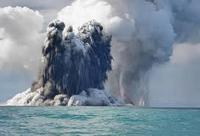
Scientists and technicians who work at volcano observatories in eleven countries visited the U.S. Geological Survey’s Hawaiian Volcano Observatory earlier this month to learn techniques for monitoring active volcanoes. The International Training Program in Volcano Hazards Monitoring is designed to assist scientists from other nations in attaining self-sufficiency in monitoring volcanoes and reducing the risks from eruptions.
-
-
Socioeconomic status may influence understanding of science
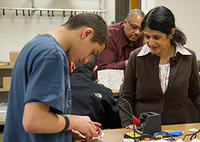
When it comes to science, socioeconomic status may widen confidence gaps among the least and most educated groups in society, according to a new study. The findings show that similar levels of attention to science in newspapers and on blogs can lead to vastly different levels of factual and perceived knowledge between the two groups. Notably, frequent science blog readership among low socioeconomic-status groups actually lowered their scores on factual tests of scientific knowledge while high levels of attention to science in newspapers caused them to feel they were less knowledgeable compared to those who read less or those from higher socioeconomic backgrounds.
-
-
DARPA seeks to speed new materials development process
Military platforms — such as ships, aircraft, and ground vehicles — rely on advanced materials to make them lighter, stronger, and more resistant to stress, heat, and other harsh environmental conditions. Currently, the process for developing new materials to field in platforms frequently takes more than a decade. DARPA seeks to address this problem by developing a methodology and toolset to compress the applied material development process by at least 75 percent: from an average of ten years or longer to just two and a half years.
-
-
As budget shrinks, DOD needs to rethink strategy to preserve U.S. technological edge
The United States currently accounts for less than one-third of global research and development spending, and this fraction is projected to decline to 18 percent by 2050. Those statistics, together with the recognition that the United States no longer maintains superiority across all research fields, mean that DOD’s technological leadership now depends upon its ability to identify and leverage relevant research advances as they emerge from the global science and technology enterprise, says a new report from the National Research Council.
-
-
Bad social policy, not ideology, is to blame for the Arab world’s downward spiral

Nothing symbolizes the sorry state of Arab politics more than the rise of ISIS. The Arab world at large appears to be fast descending into a political quagmire, only a few years after the euphoria of the so-called Arab Spring. The unravelling of old dictatorships in Libya, Tunisia, Egypt and Syria has opened up a Pandora’s box of sectarian, ethnic and tribal divisions, old fault lines that have persisted under the heavy hand of police states for the last century.
-
-
Silicon Valley braces for floods, storm surges caused by sea level rise
A new analysis found that $36.5 billion in property and at least 145,000 California residents could be directly affected in the next thirty years from flooding caused by sea level rise. San Mateo County, home to major corporations including Facebook, Oracle, and Genentechin Palo Alto, and the low-income population of East Palo Alto, would be the most affected.
-
-
Earthquake researchers get online primer for simulation method
Researchers now have access to expert instruction for an emerging simulation method to study seismic effects on structures and to design buildings that better withstand strong earthquakes. The National Science Foundation’s (NSF) George E. Brown Jr. Network for Earthquake Engineering Simulation (NEES) is providing a primer on its NEEShub. he primer explains how to use hybrid simulations, methods that are helping researchers study the effects of earthquakes on buildings and other structures.
-
More headlines
The long view
New Technology is Keeping the Skies Safe
DHS S&T Baggage, Cargo, and People Screening (BCP) Program develops state-of-the-art screening solutions to help secure airspace, communities, and borders
Factories First: Winning the Drone War Before It Starts
Wars are won by factories before they are won on the battlefield,Martin C. Feldmann writes, noting that the United States lacks the manufacturing depth for the coming drone age. Rectifying this situation “will take far more than procurement tweaks,” Feldmann writes. “It demands a national-level, wartime-scale industrial mobilization.”
How Artificial General Intelligence Could Affect the Rise and Fall of Nations
Visions for potential AGI futures: A new report from RAND aims to stimulate thinking among policymakers about possible impacts of the development of artificial general intelligence (AGI) on geopolitics and the world order.
Smaller Nuclear Reactors Spark Renewed Interest in a Once-Shunned Energy Source
In the past two years, half the states have taken action to promote nuclear power, from creating nuclear task forces to integrating nuclear into long-term energy plans.
Keeping the Lights on with Nuclear Waste: Radiochemistry Transforms Nuclear Waste into Strategic Materials
How UNLV radiochemistry is pioneering the future of energy in the Southwest by salvaging strategic materials from nuclear dumps –and making it safe.
Model Predicts Long-Term Effects of Nuclear Waste on Underground Disposal Systems
The simulations matched results from an underground lab experiment in Switzerland, suggesting modeling could be used to validate the safety of nuclear disposal sites.
